
Get The Facts

Today, more than 500,000 women undergo a hysterectomy every year and one in three will have a hysterectomy by age 60. (1) Hysterectomy is the second most common type of women’s surgery after Caesarian Section. (2)

By age 50, between 70 percent and 80 percent of American women will develop uterine fibroids, which are benign tumors that grow in and around the uterus. (3)

Although fibroids are extremely common in women, the condition is of special concern for African American women who are two to three times more likely to have these growths than white and Hispanic women. (4)

One of the reasons fibroids are of concern is the link to infertility. Today, fibroids can be found in an estimated 5 to 10 percent of infertile women. (5)

Another common GYN condition, endometriosis – which happens when the lining of the uterus grows outside of the uterus – now affects more than five million women in the U.S., especially those in their 30s and 40s. (6)
Women are in the dark about GYN Conditions and treatments
According to the National Institutes of Health, fibroids, endometriosis and other common gynecological conditions represent an important health concern due to the large number of women affected.
Yet, the reality is many women are in the dark about GYN conditions and the latest treatment options. These two infographics detail findings from a recent survey of U.S. women.
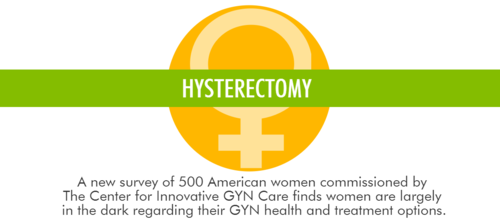
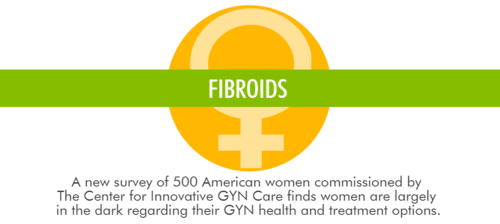
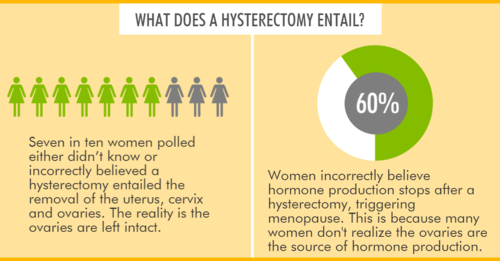



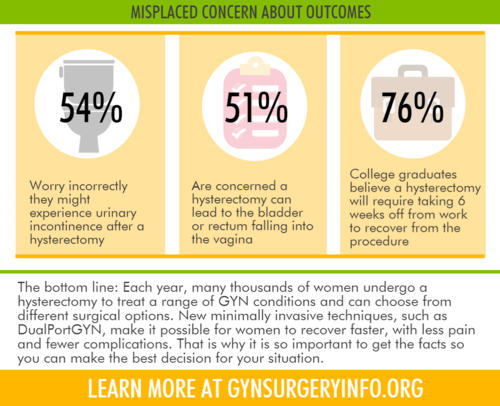
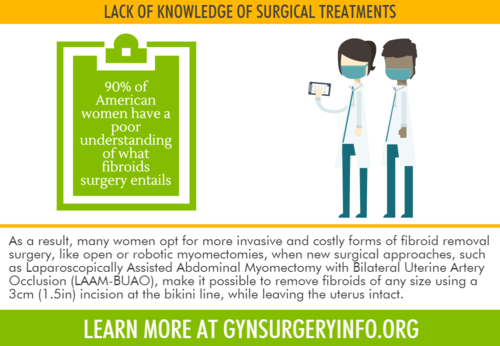
A Second Opinion Should Be Mandatory
There are many other gynecological conditions that require surgical treatment, such as endometriosis, ovarian cysts, and pelvic organ prolapse. There are misconceptions related to these conditions and treatments. A second opinion will help a woman get more information about all of her options.
Today, many women undergo more invasive surgical treatments than they may need simply because they don’t know – and don’t ask – what their options are. The consequences can be higher costs, a greater risk of pain and complications and a longer recovery time.
Here are some examples of why women should get a second opinion:
Although new hysterectomy techniques, such as DualPortGYN, can be performed with tiny incisions at the belly button and bikini line, often on an outpatient basis, 60 percent of all hysterectomies are still “open” abdominal procedures. Open hysterectomies are almost always performed in a hospital, require a much larger incision than minimally invasive options, and involve a recovery time of 6-8 weeks. According to an article in The Wall Street Journal, approximately one-third of U.S. hospitals perform all hysterectomies through open surgery.
Despite warnings from the Food and Drug Administration (FDA), some surgeons still use a power morcellator – an instrument that does much of the cutting during certain laparoscopic and robotic procedures. FDA does not recommend morcellator-aided GYN surgery because these instruments may spread cells of a hidden uterine cancer during surgery.
In other situations, women undergo robotic surgeries, which take longer to perform and are more expensive take longer to perform and are more expensive than conventional approaches.
Contributing to these situations is one underlying challenge: very few women ask questions of their physician and seek a second opinion from a trained surgical specialist before undergoing surgery. The problem is widespread. According to a 2010 Gallup Poll, 70 percent of Americans say they don’t need to ask for a second opinion.
Getting a second opinion leads to better care. In fact, several recent studies have found that as many as 60 percent of patients who sought a second opinion received a major change in their diagnosis or treatment. (7) For this reason, GYN experts encourage women to get a second (or third) opinion from a trained surgical specialist when considering GYN surgery and to select the surgeon with care. Here, it is best to opt for a specialist who received comprehensive training in GYN surgical techniques and performs hundreds of these procedures each year.
(1) CDC. (2010). National Hospital Discharge Survey. Procedures by selected patient characteristics – Number by procedure category and age.
(2) Office of Women’s Health. Department of Health & Health Services. Hysterectomy Factsheet. http://womenshealth.gov/publications/our-publications/fact-sheet/hysterectomy.html#
(3) National Institutes of Health. Uterine Fibroids Fact Sheet. Rockville MD: NIH Office on Women’s Health, October 2010. Available at http://report.nih.gov/nihfactsheets/viewfactsheet.aspx?csid=50
(4) American Journal of Obstetrics and Gynecology. Women’s Health Stats and Facts. Available at: http://www.acog.org/-/media/NewsRoom/MediaKit.pdf
(5) American Society for Reproductive Medicine Fact Sheet on Fibroids and Fertility. Available at: https://www.asrm.org/FACTSHEET_Fibroids_and_Fertility/
(6) HHS Office of Women’s Health. Endometriosis Fact Sheet. Available at: http://womenshealth.gov/publications/our-publications/fact-sheet/endometriosis.html#n
(7) Los Angeles Times. A second opinion could save your life. June 22, 2015. Available at: http://touch.latimes.com/#section/-1/article/p2p-83620952/


